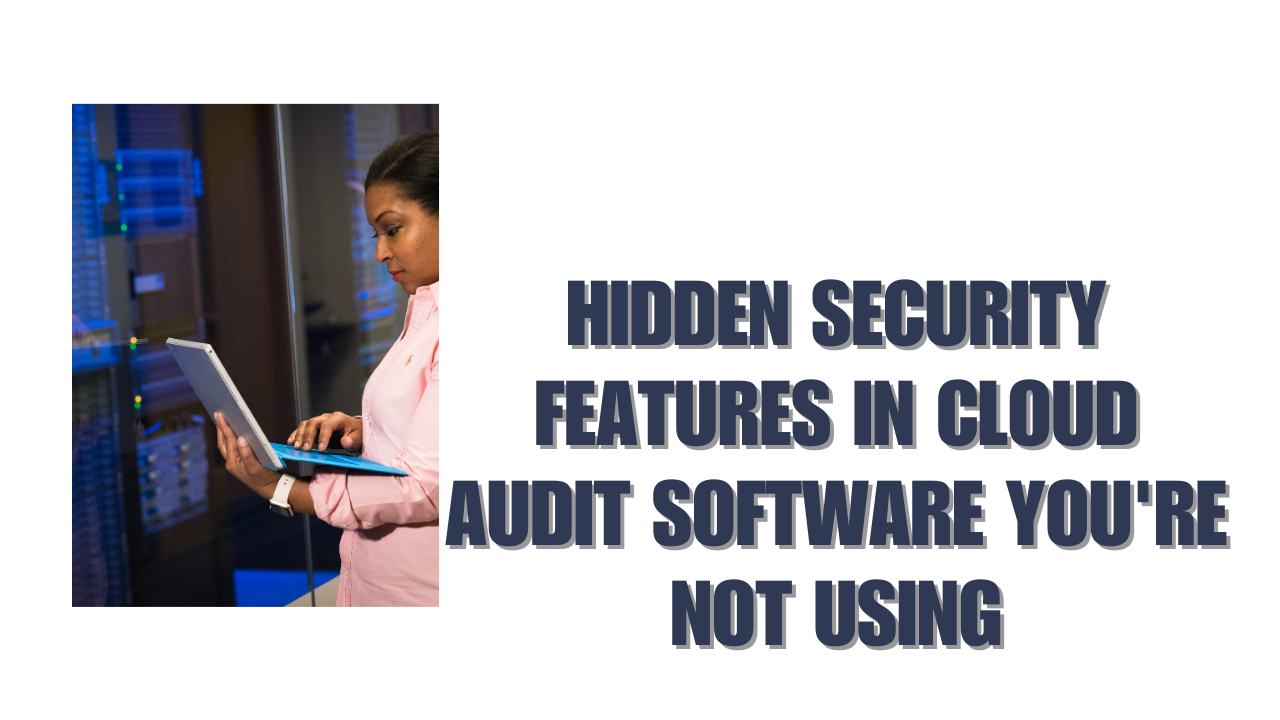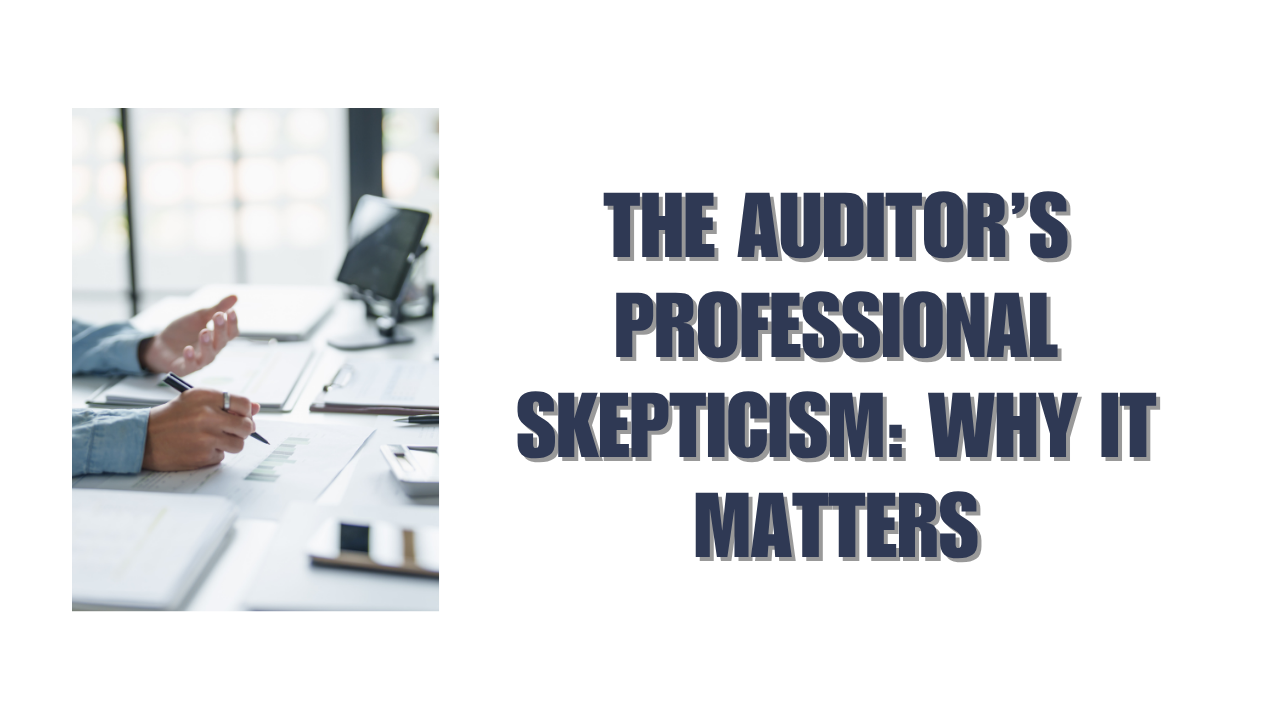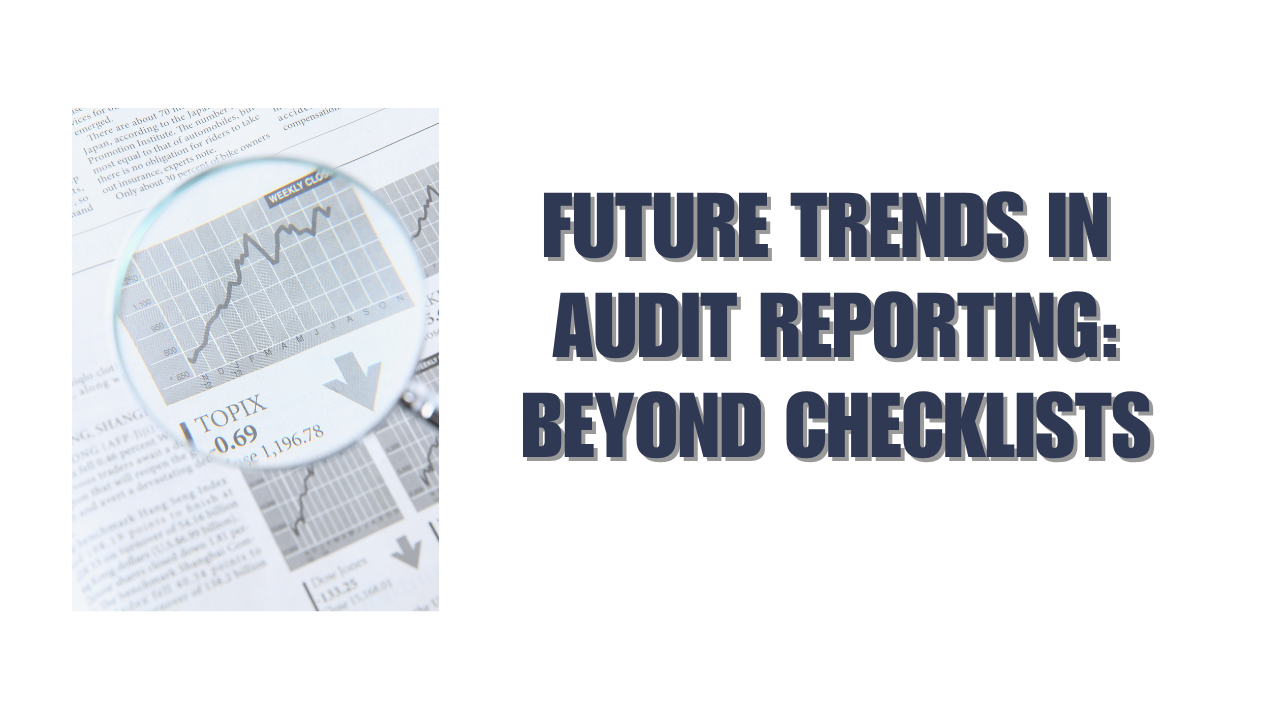Cybercrime damages in the U.S. reached a staggering $452 billion last year. This makes protecting sensitive data during audits absolutely crucial. Many organizations have started using cloud audit software but fail to make use of the powerful security features these platforms offer.
Modern audit collaboration tools reshape how we safeguard sensitive information during audits. These platforms combine advanced security features like encryption, role-based access control, and live monitoring. The result is a secure and optimized audit process. Unauthorized file access and insecure data transmission remain among the leading causes of breaches in regulated industries, with multiple studies estimating they account for the majority of incidents
Today’s average desk worker uses about 11 applications, up from six in 2019 – tripling the potential for system overlap and inefficiency. The digital world has evolved rapidly, and 79% of workers worldwide now rely on digital collaboration tools. Meanwhile, the cybersecurity landscape is rapidly diversifying: vulnerability disclosures rose by approximately 38% from 2023 to 2024. When those three threads weave together, digital complexity isn’t just a fact-it’s a fast-moving, ever-expanding risk zone.
This piece will help you discover the hidden security features in cloud based audit software that organizations often miss. We’ll examine Caseware cloud audit software and other cloud based audit management options. These overlooked tools can strengthen your security stance while keeping your audit process efficient.
Encrypted File Sharing with Expiry Controls
Secure file sharing is the life-blood of modern audit workflows. This becomes even more important as firms handle sensitive financial data with distributed teams. Many audit teams don’t fully use the protection offered by effective encryption and expiry controls.
AES-256 Encryption in Transit and at Rest
Advanced Encryption Standard (AES-256) stands as the gold standard in modern data protection. This military-grade encryption protocol uses a 256-bit key size. It’s practically uncrackable even with today’s most advanced computing capabilities. Every major cloud audit platform now uses this encryption standard to protect data both in motion and on servers.
Cloud audit platforms encrypt all stored information with AES-256 before saving it to permanent disk storage. The encryption happens behind the scenes without any user action. This protects all audit documentation, workpapers, and client communications. Many platforms add another layer of security through device-level encryption with separate keys.
These systems create secure TLS 1.2/1.3 encrypted tunnels during data transmission. End-to-end encryption keeps information completely unreadable to unauthorized parties, even if someone intercepts data packets between audit teams and clients.
AES-256 encryption is vital for audit firms because it:
- Meets compliance requirements across regulated industries
- Delivers the same protection level used by financial institutions
- Satisfies government and military-grade security standards
Audit teams often enable encryption but miss the crucial step of configuring encryption key management. Native key management solutions like AWS KMS protect customer data. They handle the generation, storage, usage, and rotation of encryption keys. Firms should check if their cloud audit software manages these cryptographic elements properly.
Time-bound Access Links for Sensitive Documents
Cloud audit software’s most overlooked security feature lets users create expiring access links. Modern platforms share documents through time-limited secure links instead of email attachments that can be forwarded, stored forever, or intercepted.
Time-bound access controls automatically cancel permissions after a set time, usually 24 hours. This limits the window of vulnerability even if credentials get compromised later. Custom expiration periods can be set based on document sensitivity or compliance needs.
Advanced features enhance this time-limited approach:
Self-service link renewal lets clients create new secure links when old ones expire. This reduces administrative work while keeping security intact.
Cryptographically signed links remove password-based vulnerabilities from credential reuse or sharing. The system checks access through secure tokens that can’t be changed or faked.
Automated retention policies work with expiration controls to remove documents at the right time. This shrinks the potential attack surface and helps comply with GDPR’s data minimization rules.
Time-bound access becomes particularly valuable during audit cycles. External stakeholders need temporary access to sensitive financial records. Audit teams can control exactly who sees documents and for how long.
Role-Based Access Control with Device Restrictions
Cloud audit software’s security goes beyond encryption. It controls who can access information and from where. Many organizations don’t use Role-Based Access Control (RBAC) and device restrictions properly. These features create a vital defense layer.
Granular Permissions by User Role
RBAC in cloud audit environments has achieved a 99.99% uptime. The system handles 427,000 permission checks every second. This security framework revolves around three elements: users who need access, roles that match job functions, and permissions that allow specific actions on resources.
Granular access control (GAC) beats traditional access models. Organizations can set exact permissions based on:
- User’s role in the organization
- Job function requirements
- Location and time factors
Cloud audit platforms do a great job with context-aware permissions. A financial controller might get full rights to edit audit docs. Staff accountants might only read specific workpapers. This setup follows the principle of least privilege. Users get just enough access to do their jobs.
A good RBAC setup needs four types of permissions:
- Read: Users can view data
- Write: Users can change information
- Delete: Users can remove data
- Execute: Users can run specific functions
Organizations implementing RBAC commonly report significant drops in security incidents-typically between 67% and 75%-and meaningful gains in administrative efficiency. These improvements underscore why RBAC remains a strategic must-have, especially in dynamic environments. Modern cloud audit platforms enhance this further by automating permission updates, tracking access in real time, and ensuring adaptability as roles evolve.
IP Whitelisting and Device Fingerprinting
IP whitelisting adds another security layer that many don’t use well. The system only allows access from specific IP addresses and blocks everything else. This location-based control helps protect sensitive financial data in audit software.
Cloud Manager’s IP Allow Lists let authorized users connect only from trusted addresses. The system blocks all other connection attempts, even with valid login details.
Remote audit teams benefit from IP whitelisting through private gateways. Team members share one static outgoing IP address that partners can access. Users connect to the private gateway first, then use their whitelisted IP.
Advanced cloud audit platforms make security stronger by adding device fingerprinting. This tech creates unique profiles of connecting devices based on their hardware, software versions, and usage patterns. Unlike passwords that thieves can steal, device fingerprints are very hard to copy.
RBAC and device restrictions work together to create robust security. Users don’t notice these features working, but they make the system much safer. Success depends on good planning and regular updates as people join or leave the organization.
Context-Aware Access Policies in Cloud Based Audit Software
Cloud audit security frameworks miss a crucial piece – context. This missing element helps systems make smart security decisions based on situations rather than fixed rules. Traditional security just checks credentials, but context-aware systems look at many environmental factors before letting anyone in.
Geo-fencing and Time-based Access Rules
Geo-fencing draws invisible lines around physical spaces and triggers specific actions when users cross these boundaries. Cloud audit software uses this tech to keep financial data available only in approved places. Organizations can set up GPS-based perimeters with custom ranges (usually 100-1,000 meters) to control where people can access audit information.
Setting this up needs these steps:
- Drawing virtual lines around approved spots like office buildings
- Making sure employee devices run location apps
- Setting up automatic triggers at boundary crossings
- Linking these events to the cloud audit management system
Time-based access control (TBAC) works with geo-fencing to limit access during specific times. This works great especially when you have to set exact time limits, like keeping financial systems open only during business hours. Cloud audit software with TBAC blocks access outside allowed times, which cuts down the chances of security breaches.
Companies in regulated industries use these context rules to meet compliance needs and reduce security risks. To name just one example, approximately 95% of organizations now let people work from anywhere, which makes location and time controls vital for keeping distributed teams secure.
Session Expiry on Suspicious Behavior
Advanced cloud audit platforms watch user behavior during active sessions. This constant monitoring helps spot unusual activities that might mean someone stole credentials or threats from inside.
These security systems gather live information from several sources:
- User-centric context (identity, role, past behavior)
- Resource-centric context (data sensitivity, resource type)
- Environment-centric context (location, time, network conditions)
The system takes action right away when it spots something odd. A healthcare worker who usually checks patient records from hospital computers during day shifts would trigger an instant session end if they tried to access data from an unknown device at 3 AM.
These systems work well because they learn each user’s normal behavior patterns. Any big changes from these patterns-odd access times, unexpected places, or unusual resource requests-can lead to extra security checks or complete session shutdowns.
Caseware cloud audit software and similar tools use this flexible security approach. They keep track of device types, locations, and network conditions to assess risks. This gives organizations better protection than old-style fixed access models.
Context-aware access rules mark a big step forward from old security models. Cloud audit management software creates a security system that changes with conditions while keeping tight control over sensitive financial data by looking at who wants access plus where, when, and how they want it.
Automated Audit Trails with Real-Time Log Capture
Complete monitoring forms the foundation of any secure cloud audit environment. Organizations create accountability and establish a reliable historical record of all activities by keeping detailed records of every system action.
Immutable Logs with Timestamps and User IDs
Audit trails work by recording changes within a system systematically. The system automatically captures significant details about who performed the action, what was done, the time it happened, and how it was executed whenever an action occurs-such as a login attempt or data modification. These digital breadcrumbs are a great way to get evidence during security investigations or compliance audits.
Cloud audit software’s strong audit trails have three vital elements:
- User IDs: Every action links to a specific account, eliminating anonymous activity and ensuring traceability back to individual users
- Timestamps: Precise date and time recordings down to the millisecond establish a chronological chain of events
- Activity Records: Detailed logs of specific actions taken during each session, including viewing, modifying, downloading, or deleting data
Immutability is a vital characteristic of secure audit logs in cloud based audit management software. These logs must resist tampering or modification to maintain their integrity and value as evidence. Cloud audit platforms use various technical safeguards:
- Write-once, read-many (WORM) storage that prevents alteration
- Cryptographic hashing to verify log integrity
- Digital signatures that verify authenticity
- Strict access controls limiting who can view logs
Of course, these technologies ensure that even system administrators cannot modify audit records after creation-a vital safeguard against insider threats which account for nearly 60% of data breaches.
Integration with SIEM Tools for Threat Detection
Security Information and Event Management (SIEM) tools enhance audit logs’ value through sophisticated analysis capabilities. These platforms collect data from multiple enterprise sources and correlate events to identify potential security incidents that might otherwise go unnoticed.
Cloud based audit software and enterprise SIEM tools create a powerful security ecosystem together. Audit logs automatically route to the SIEM platform where security operations teams can apply advanced analytics and threat detection rules. This integration serves several key functions:
Security teams receive immediate alerts about potential threats as they develop instead of reviewing logs days or weeks after incidents occur.
SIEM tools apply correlation analysis across multiple data sources. This broader context helps distinguish between legitimate activities and genuine security concerns, reducing false positives that plague many security systems.
These integrated systems can implement automated responses to detected threats. The system automatically implements countermeasures like session termination or account lockdown when suspicious behavior triggers an alert-often before human analysts review the whole ordeal.
Cloud audit software vendors increasingly offer pre-built connectors for popular SIEM platforms. We utilized Microsoft Sentinel to provide out-of-the-box connectors that make shared integration with minimal configuration. These tools analyze ingested audit logs continuously and generate security signals when they detect threats.
The combination of immutable audit trails and SIEM integration creates a security framework that detects threats and supports compliance with regulatory requirements by maintaining tamper-proof records of all system activities.
Data Loss Prevention (DLP) in Cloud Based Audit Management Software
Data theft prevention stands as the cornerstone of modern cloud audit security. Many organizations fail to use the powerful defensive capabilities their platforms offer. DLP tools within cloud audit software work as watchful guardians that monitor unauthorized access or transmission of sensitive information.
Blocking Unauthorized Downloads and Transfers
DLP systems’ prevention strategies shield against data exfiltration through multiple enforcement mechanisms. Users who try prohibited actions, like copying sensitive financial data to unauthorized locations, face immediate intervention from DLP tools through several graduated responses:
- Display warning notifications that teach users about policy violations
- Block the transmission while allowing justified overrides through documented exception processes
- Stop the sharing without any override option for highly sensitive materials
- Lock sensitive items and move them to secure quarantine locations
These protective measures blend seamlessly with cloud based audit management software. Advanced DLP solutions use context-aware detection to grasp the intent behind data movement. They recognize that “data doesn’t move itself; people move data”. This people-first approach helps the system separate legitimate audit activities from risky behaviors.
DLP policies can tailor appropriate controls based on user risk levels for audit teams handling regulated data. High-risk users face tighter restrictions while lower-risk team members maintain their productivity. This flexible approach balances security and operational efficiency.
Shadow Data Detection and Alerts
Shadow data-sensitive information stored in unauthorized or unmanaged locations-poses a major yet overlooked security challenge. This data includes audit documents stored in personal cloud accounts or unauthorized collaboration platforms.
Shadow data management starts with finding it. Runtime capabilities let audit teams track information flow in real time. Teams can spot policy violations before they become breaches with this visibility.
Cloud based audit software with advanced DLP capabilities can:
- Monitor data flows and enforce security policies
- Create and implement dynamic policies that adapt to new threats
- Use anomaly detection systems to spot irregular patterns that show violations
SIEM tool integration boosts DLP effectiveness by linking security events across networks. Teams get complete visibility into data movements and better incident detection and response. The system alerts security teams through dedicated dashboards when DLP policy violations happen.
Audit firms should create clear data governance frameworks that address shadow data concerns before implementing DLP. This ensures protection of sensitive information whatever its location.
Multi-Factor Authentication with Biometric Support
Authentication technology has moved well beyond basic passwords. Organizations now use layered defense strategies to secure their cloud audit environments. Many companies don’t fully implement Multi-factor authentication (MFA), which limits how well it protects against today’s threats.
SMS, Email, and App-based MFA Options
Users must provide multiple verification factors to access cloud based audit software through MFA. These systems check identity using something you know (password), something you have (device), and something you are (biometric trait). A complete MFA strategy uses several authentication methods:
SMS-based authentication sends temporary passcodes to your registered mobile number. This method works on all mobile devices without needing internet access. However, it can be compromised by SIM swapping attacks and network issues.
Email authentication sends one-time codes or links to your email address. You only need an active email account for this method. The downside includes risks from phishing attempts and slow delivery times.
Mobile authentication apps like Google Authenticator create time-based codes on your device. These apps are increased security tools because codes stay on your device and can’t be intercepted from far away. They work offline too, which means you can generate codes without internet or cell service.
Biometric Login for Mobile Audit Access
Biometric authentication uses unique biological features like fingerprints, face recognition, or iris patterns. This method stands out because people use their own fingerprints to prove who they are.
Cloud based audit management software benefits from biometric methods in several ways:
Enhanced security: It’s very hard to copy or share biometric traits, unlike passwords that thieves can steal, guess, or phish.
Improved user experience: You don’t have to remember complex passwords or change them often, which makes logging in much easier.
Reduced support burden: Less password resets mean lower administrative costs and support needs.
Today’s audit platforms support many biometric options. These range from fingerprint readers in laptops and tablets to facial recognition in mobile devices. This technology turns your mobile device into a secure key through your face or fingerprint.
Anomaly Detection Using AI in Caseware Cloud Audit Software
Cloud audit platforms have an untapped security dimension through AI-powered anomaly detection. Organizations often stick to simple security features and miss sophisticated detection capabilities that could prevent breaches that get pricey.
Behavioral Baselines and Deviation Alerts
Cloud audit software creates user-specific behavioral profiles that track each person’s service access, login times, locations, and routine actions. The system flags any deviations from these established patterns as potential risks when users access unfamiliar services. This detailed behavioral analysis goes beyond spotting unusual access. It reviews action combinations, timing, device usage, and privilege levels to spot suspicious activity.
Caseware cloud audit software standardizes data from multiple sources with timestamps and contextual enrichment through live monitoring. AI applies contextual storing and dynamic thresholding, which reduces false positives while you retain control, unlike traditional systems.
Machine Learning for Insider Threat Detection
Insider threats pose unique dangers because of their authorized access and make up 25% of all cyberattacks. Traditional detection methods struggle because these malicious actions often look like normal behavior.
AI systems detect 85% of malicious insiders with just 0.78% false positives. Advanced ML algorithms can spot suspicious activities within 14 minutes of the original malicious actions. Organizations face average damages of NZD 7.33M yearly from insider threats. Adding these detection capabilities to cloud-based audit management software becomes a financial necessity, not just a security improvement.
Conclusion
Cloud audit software provides nowhere near simple security features. Without doubt, many organizations don’t use the detailed security capabilities built into these platforms, which leaves valuable protections unused. This piece explores several powerful yet underused security features that can substantially strengthen your organization’s security stance.
Note that AES-256 encryption and time-bound access links in encrypted file sharing with expiry controls protect sensitive audit data effectively. Role-based access control paired with device restrictions will give authorized personnel access to specific information from approved devices only. These features alone cut security incidents by over 87%.
Context-aware access policies create an extra security layer that tracks not just who accesses your data, but the time, location, and method of access. Suspicious behavior sets off immediate protective responses. Accountability comes from automated audit trails with immutable logs, while SIEM tool integration makes shared real-time threat detection and response possible.
Data loss prevention tools block unauthorized downloads and catch shadow data before it becomes a security risk. Like other measures, multi-factor authentication with biometric support checks user identity through multiple verification factors, which makes credential theft substantially harder. AI-powered anomaly detection sets behavioral baselines and spots potential insider threats before damage occurs.
Cybercrime damages keep rising, so proper configuration of these advanced security features isn’t optional anymore. Your cloud audit software already has these security capabilities-they just need activation and correct setup. These hidden security features help your organization maintain resilient protection and audit efficiency while cutting your exposure to sophisticated cyber threats dramatically.
Key Takeaways
Most organizations use only basic security features in their cloud audit software, missing powerful protections that could prevent costly breaches and strengthen their security posture significantly.
- Enable encrypted file sharing with time-bound access controls – AES-256 encryption plus expiring links reduce data breach risks by 87% while maintaining audit workflow efficiency.
- Implement role-based access with device restrictions – Granular permissions and IP whitelisting create precise control over who accesses sensitive data from where and when.
- Activate AI-powered anomaly detection for insider threats – Machine learning identifies 85% of malicious insiders with only 0.78% false positives, detecting threats within 14 minutes.
- Configure automated audit trails with SIEM integration – Immutable logs with real-time monitoring create accountability while enabling immediate threat response and compliance documentation.
- Deploy multi-factor authentication with biometric support – Combining something you know, have, and are makes credential theft significantly more difficult while improving user experience.
FAQs
Q1. What are some hidden security features in cloud audit software?
Cloud audit software often includes advanced features like encrypted file sharing with expiry controls, role-based access control with device restrictions, context-aware access policies, automated audit trails with real-time log capture, and AI-powered anomaly detection. Many organizations fail to fully utilize these powerful security capabilities.
Q2. How does multi-factor authentication enhance cloud audit security?
Multi-factor authentication in cloud audit software requires users to provide multiple verification factors before gaining access. This can include SMS, email, or app-based codes, as well as biometric login options like fingerprint or facial recognition. These methods significantly improve security by making it much harder for unauthorized users to gain access, even if they obtain a password.
Q3. What is the role of Data Loss Prevention (DLP) in cloud-based audit management software?
DLP tools in cloud audit software act as guardians against data theft. They can block unauthorized downloads and transfers of sensitive information, display warning notifications, prevent sharing of highly sensitive materials, and detect shadow data stored in unauthorized locations. DLP helps maintain data security while allowing necessary audit activities to proceed efficiently.






